
Submitted questions will be posted with my response by the following Tuesday or before.
Submitted comments will be moderated and approved within 24 hours.
Blended Leather Furniture

Question from Nicole
Hi Debra,
First, thank you so much for your site and work – much appreciated!
I have a question about leather furniture – I have a pretty severe dust mite allergy so I avoid fabric upholstery. I understand that most leather furniture is filled with polyurethane foam and many are also coated with a polyurethane sealer. My first question is, does the leather assist in blocking the off-gassing from the foam cushions? And second, is the applied polyurethane surface treatment more toxic than what is found on fabric furniture?
I’ve just purchased two La-Z-Boy leather/blend recliners and the smell is bugging me – thinking I may need to return them but not sure what I can get other than all-wood furniture?!
Thanks so much for your help!
Debra’s Answer
Thanks for asking this question. It sent me into researching a whole other aspect of leather that I didn’t even know about.
First of all, if you had genuine leather, it would have a number of chemicals used in the tanning process. Unless you had “vegetable-tanned” leather, which is actually pretty wonderful. But I’ve not seen furniture made of vegetable tanned leather. But it is a possibility for an expensive custom piece.
But what you have is even worse. Blended leather or”Bonded leather — sometimes called “reconstituted” leather or just plain “ inyl”[!] — is not the whole skin of an animal, but left-over pieces of hide blended together to form a seamless piece of leather material.
It’s a similar process to making particleboard. Yikes!
So what goes into this fake leather?
It is made as a layered structure with
- a fiber or paper backer
- a pulp made from shredded leather and fabric, joined together with adhesive
- a polyurethane layer which is embossed with a leather-like texture.
It may also have other chemical finishes to make it feel or smell like real leather.
I would return these recliners. This is more plastic than leather. I’m not surprised you are having problems with it.
QUORA: What are the differences between a bonded leather sofa to a genuine leather sofa?
CONSUMER AFFAIRS: Bonded Leather Sofas vs Genuine Leather—What’s the Difference?
Here’s an interesting article about the parts of upholstered furniture: GREEN HOME GUIDE: Any recommendations for a healthy leather soda that won’t offers?
Safest Mattress for MCS
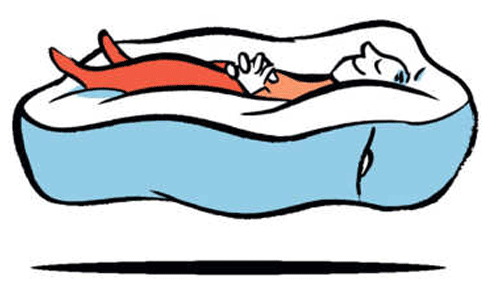
Looking at the questions that come into this Q&A, one of the most frequent is from people with Multiple Chemical Sensitivities (MCS) looking for a safe mattress. Even the most natural materials are not tolerated for one reason or another. Not because the materials are toxic, but because of individual sensitivities.
When I first learned of of MCS—forty years ago now—there were no natural mattresses.
I got a metal cot, tossed the mattress and put a pile of cotton thermal blankets on top. It worked perfectly.
Today I got a call from a reader who wanted to know more about exactly what I did. And while talking I had an idea.
Today I am thinking that the best and safest “mattress” for someone who is sensitive to virtually all raw materials would be to take a zippered mattress cover of the desired size and stuff it with cotton blankets and towels. This way the entire mattress could be taken apart and aired and washed as needed.
This might not bee the most plush mattress available and it might be lumpy, but it should be tolerable.
All materials should be pre-washed.
I would roll up the blankets or towels and then stuff the rolls in the case.
I’ve done this to make pillows in hotel rooms and I am always happy with the results. A mattress is the same idea, only larger.
If any of you try this, please comment and let us know how it went.
Also if you’ve done anything else unusual like this to make something to sleep on that you can tolerate, please let us know that too.
Hammocks come to mind as well.
New EWG Guides Need to Improve Their Recommendations
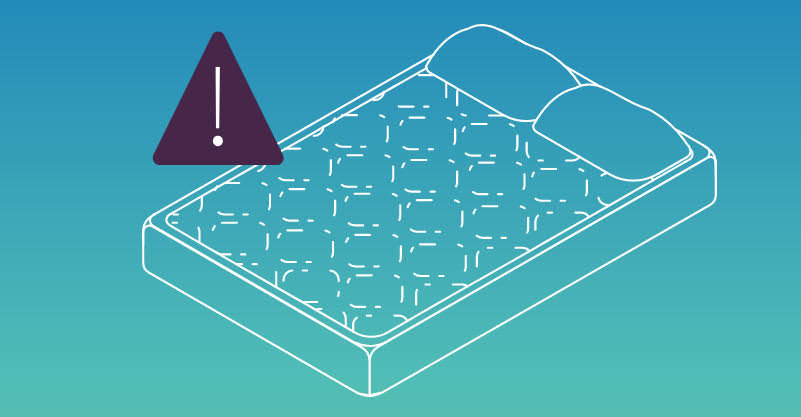
I took some time this week to read parts of the new EWG Home Guides , and found some errors that I feel warrant correction.
I’ve been monitoring Environmental Working Group for some years now and consistently feel that I can’t just stop my work and refer everyone to EWG for product recommendations. While I admire their work researching toxic chemicals and their health effects, I often do not agree with them about their safe alternative recommendations.
Alerting the public about toxic expsures and finding safe alternatives are two very different fields, which require different sets of background understanding and different collections of data.
Here’s just an example of what goes wrong when EWG starts making recommendations regarding how to choose nontoxic products.
In their new Healthy Home Guides, there’s a page on Healthist Mattresses.
Here are some misleading and outright wrong recommendations I’d like to correct on this page.
Recommendation to Look for “Natural Latex”
The term natural latex is meaningless and unregulated. Latex foam can be made from natural tree sap or petrochemicals. While one might assume that latex labeled “natural” is made from tree sap, it can also contain petrochemical latex and may contain pesticides as well.
Better to look for GOLS certified organic latex, which is made from certified organic tree sap. It’s widely available as an option for many mattresses.
Also EWG recommends latex for crib mattresses. Virtually all all latex/allergy groups (medical or otherwise) do not recommend latex for baby products because it is a well-known allergen.
Recommendation to Not Use Flame Retardants
EWG says not to use flame retardants, but then recommends Oeko-Tex and GREENGUARD Gold certification, neither of which prohibit flame retardants. Both of these two certifications permit the use of polyurethane foam filled mattresses, and, when polyurethane foam is used in a mattress, it is impossible to pass government flammability standards without flame retardants, whether those flame retardants are added into the foam or in a flame barrier that surrounds the foam. (The only exception to the use of flame retardants could be to surround the foam with wool, but I’m not aware of any brand that uses wool with polyurethane foam.)
As well, it is quite common for mattress manufacturers to downplay the use of flame retardant chemicals by making claims like “No flame retardant chemical, we only use flame barriers”. But then they don’t tell you what’s in the flame barriers. The flame barriers typically are made with various flame retardant chemicals.
Recommendation of GREENGUARD GOLD certification
The worst mistake on the page, in my opinion, is the recommendation of mattresses certified by GREENGUARD Gold, particularly crib mattresses. This certification is now meaningless in my eyes because so many of the crib mattresses are waterproofed with a layer of toxic PVC that emits dangerous phthalates.
The reason these toxic crib mattresses can be certified by GREENGUARD GOLD is because GREENGUARD does not test for phthalates. I have a letter from them confirming this. So while GREENGUARD can say these mattresses meet their standards, their standards don’t contain certain chemicals for which testing needs to be done. If all you look at is testing for a limited list of chemicals, you miss the fact that a material contains other toxic chemicals that are not on the test list. I know this because I studied PVC and I know the chemicals it outgassed. And I got the list of chemicals GREENGUARD test for and phthalates isn’t on the list. Then I verified the missing phthalates with GREENGUARD. EWG should know this about GREENGUARD. Apparently they don’t. A mattress manufacturer can actually be using absolutely prohibited phthalates and still be GREENGUARD Gold certified!
Waterproofing chemicals are not mentioned at all
In 2017 I took a look at all the major brands of crib mattressses to see what type of chemicals were used for waterproofing. I found PVC (that emit phthalates), per fluorinated chemicals (PFCs), and nanoparticles. EWG warns against exposure to all of these, but did not mention their possible presence on crib mattresses at all.
EWG Recommendations are Close, but Not Close Enough for Me
I know from experience that people who are interested in toxics want to know about ALL the toxic exposures for a particular type of product, so they can make an informed choice.
If EWG wants to set product standards and make product recommendations, they need to do a better job of it.
What we really need are some standards for nontoxic products that we can all agree on, and encourage manufacturers to meet those standards. That’s the direction I am planning to go.
Scotts 1000 sheets per roll toilet paper

Question from Karen
Hi Debra,
Like you, I’ve used Scott’s toilet tissue for years.
The last 2 packages I bought, though, reeked of an odor and literally made me sick. Even the Extra Soft did, but with a different smell.
The website says they are unscented (but did not say “fragrance free”), and that the plain tissue MAY contain post consumer material.
Have you noticed this? Any suggestions for a substitute?
Thank you!
Debra’s Answer
At the moment I am living with Larry’s family, so I don’t buy the toilet paper. But they are buying unscented toilet paper at my request.
Just a few days before receiving your email I noticed that I thought they had purchased scented toilet paper by mistake. But I looked on the label and it said it was dye- and scent-free. So I’m not sure what is happening with scent in these toilet papers these days.
Readers, what toilet paper are you buying now that you know to be fragrance-free?
Lead in Recycled Ceramic Tile
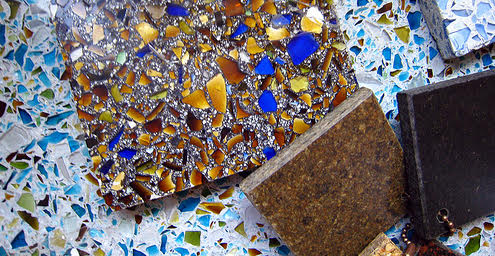
Question from Douglas
Hi Debra,
Are you aware that some US and Canadian recyclers are shipping lead-bearing picture tube glass from electronic hazardous waste to Spain for re-introduction into new ceramic tile? Your concerned readers would probably like to know since US imports its majority of tile.
There’s lot of evidence. The link below is to EPA’s position, which opened the flood gates for hundreds if not thousands of truckloads of leaded glass: https://yosemite.epa.gov/osw/rcra.nsf/0c994248c239947e85256d090071175f/44ce5d76da2bd53785257d630062ed82%21OpenDocument.
My gripe with this is, US Tile manufacturers eliminated lead because lead causes many health, safety and environmental problems and, yet US recyclers ship leaded glass with 200,000 parts per million lead, to Spain and call that recycling. The US Tile companies have proved that lead is not necessary to make a high quality tile. It is a sham to say that adding lead to tile is a “legitimate” secondary use.
The concept of Circular Economy is to eliminate toxics from new products so they are easily recycled in the future. Putting lead in tile is moving backwards.
Debra’s Answer
Thanks for sending this. I always appreciate info on toxic exposures from my readers.
Recycling toxics into new consumer products is not the proper way to dispose of hazardous waste.
Underwear Recommendations?
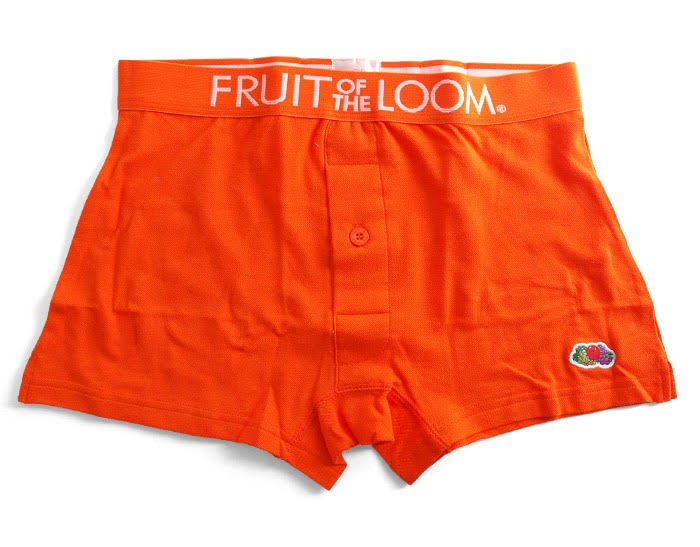
Question from Audrey
Hi Debra,
I have a friend (man) who is mcs and cannot buy fruit of the loom or Hanes underwear anymore – it is treated with an odor guard – right on the package he says that it is written Dow Chemical. I cannot use Jockey for Her panties anymore – Ever since they are not made in the U.S. they have a very strong chemical odor that I cannot get out by either airing out or soaking in baking soda or vinegar. I cannot afford the organic ones. What can we mcsers do???
Debra’s Answer
Readers? Any recommendations?
Here’s a press release about the addition of Odor Guard to Fruit of the Loom:
Life Without Plastic — The Definitive Guide
Every once in a while I see a book that is written the way I would write it, and this is one of those books.
Life Without Plastic: The Practical Step-by-Step Guide to Avoiding Plastic to Keep Your Family and the Planet Healthy is an account of the first hand experience of Chantal Plamondon and Jay Sinha, founders of the website Life Without Plastic.
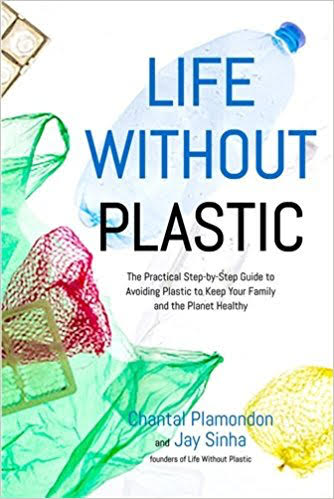 The website already has been a comprehensive resource of products you can use to replace plastic items around your home, but the book goes even further. After telling their story, Chantal and Jay give us
The website already has been a comprehensive resource of products you can use to replace plastic items around your home, but the book goes even further. After telling their story, Chantal and Jay give us
- a Quick Start Guide to removing plastic from your home
- a comprehensive review of plastics and their health effect (which everyone should read),
- instructions for removing plastic from your personal space and
- plastic-free living on the go.
This couple really knows and lives this subject.
So if you want to eliminate plastic from your life, this is the book to get.
Listen to my interview with Chantal and Jay on Toxic Free Talk Radio (or read the transcript) at TOXIC FREE TALK RADIO: Life Without Plastic.
Nontoxic Cleaning Products for Schools

Question from Cheryl
Hi Debra,
I am a School Nurse with very low immunity and subsequent severe chemical sensitivities. The chemicals used at school are destroying me. My body burns and itches the moment that I walk through the door. I need recommendations for products that both sanitize and clean floors, counter tops and rugs. Help, please!
Thanks.
Debra’s Answer
Well, we’re in luck today because the EPA just issued a whole new page just a few months ago on Cleaning Effectively for a Healthy School Environment.
This page tells why it’s important, what you can do, and gives a long list of resources and organizations that can help.
At the end there are three programs that are specifically about cleaning products for schools:
- The Product Review Database maintained by the Los Angeles (California) Unified School District offers a searchable database of over 6,000 products evaluated by the district’s Office of Environmental Health and Safety to determine their suitability for use in and around Los Angeles schools.
- New York’s Green Cleaning Program operated by the New York State Office of General Services presents best practices and a list of approved green cleaning products. A toolkit also describes five steps to a green cleaning program as well as online training courses and customizable documents and templates.
- Green Cleaning, Sanitizing and Disinfecting: A Toolkit for Early Care and Education, supported by the California Department of Pesticide Regulation, helps programs use less hazardous cleaning products and practices while also reducing infectious disease.
But do check out the entire page and the entire list as there are many more resources.
With this page, there should be no reason why any school should us toxic cheaning products. Just show this page to the powers that be in your school and get them to take action. All the information is right here.
Consumer Reports Warns Not to Eat Romaine Lettuce

Late last week Consumer Reports issued a warning to not eat romaine lettuce.
“Over the past seven weeks, 59 people in the U.S. and Canada have become ill from a dangerous strain of E. coli bacteria, likely from eating romaine lettuce. In the U.S., the infections have occurred in 13 states (California, Connecticut, Illinois, Indiana, Michigan, Nebraska, New Hampshire, New York, Ohio, Pennsylvania, Virginia, Vermont, and Washington state). Five people in the U.S. have been hospitalized and one has died, according to the Centers for Disease Control and Prevention (CDC). There has also been one death in Canada.”
The Centers for Disease Control confirmed that the strain of E. coli detected in the U.S. is “a virtual genetic match” with the one that has caused illnesses in Canada.
You have no doubt heard this news already from your usual news sources, but I just want to add my two cents.
A reader sent me a comment from an organic farmer. He said
They say “all romaine” and can’t figure out why that is. Well, they answer it in the third paragraph:
“Until the cause of the current outbreak is known and the implicated food is removed from the supply chain, CR’s experts say consumers should avoid eating any romaine lettuce.”
The problem is the supply chain, the global food system that mixes produce from dozens or hundreds of farms together, including lots of lettuce grown overseas. All it takes is one farm doing things wrong and all romaine lettuce becomes deadly.
Please buy locally grown romaine at the farmers market and eat it with gusto.
I wanted to comment on this because I usually don’t buy romaine lettuce from the supply chain. My number one source of lettuce is my local organic farmer’s market. All their lettuce comes from their own farm. It’s not contaminated.
If lettuce is out of season (as it is now) I eat other greens or buy organic lettuce at a local produce market that does get their produce from the organic supply chain.
I hardly ever buy romaine anyway. I prefer a mix of red and green leaf lettuces.
But Larry’s family (who we live with) always buys romaine lettuce in a plastic bag at the supermarket. I’m happy to report that this warning resulted in the purchase of red leaf lettuce. No plastic bag.
If you eat romaine lettuce, please take this warning as an opportunity to explore local organic sources and other delicious lettuces.
FOOD SAFETY NEWS: Consumer Reports warns against eating any romaine lettuce
My New Space Heater
Every winter the question of space heaters seems to come up.
Most heaters you will find on store shelves are made with plastic housings, which is the worst choice because heat will cause the plastic to outgas into the air.
I’ve written a number of posts in the past about space heaters. O&A: Portable Heaters With Metal Housings in particular outlines all the types of heaters to look for plus has links to other posts about heaters.
Today I want to tell you about a space heater of a different type that Larry purchased this year at Costco, and I like it so much I took it from him to put in my office (it’s in a building separate from the house where there is no central HVAC and the built-in heater is broken).
I LOVE this heater. There has never been an odor from the beginning.
Though the heating element is suspended in a hard plastic frame, it does not seem to outgas. The only part that heats up the the heating element and the large metal “dish” that focuses the heat in the direction right on you instead of heating the entire room.
I can turn on this heater on a cold morning and in minutes my immediate workspace is warm.
For years I have used small ceramic heaters and more recently a utility heater with metal housing. Both of those have fans that make noise. This is absolutely silent except for a slight hum that is much less noticeable to me.
Here’s another interesting heater I just found on amazon while I was looking up the link for the Presto. The description says “Safe and oderless heat. Eco friendly, does not consume oxygen and does not dry the air.”
It looks like a standard infrared heating element in an aluminum tube. It costs twice as much, but seems to be more portable and can be used indoors or out. This one can be mounted on a wall or stand and in various other ways as well.









